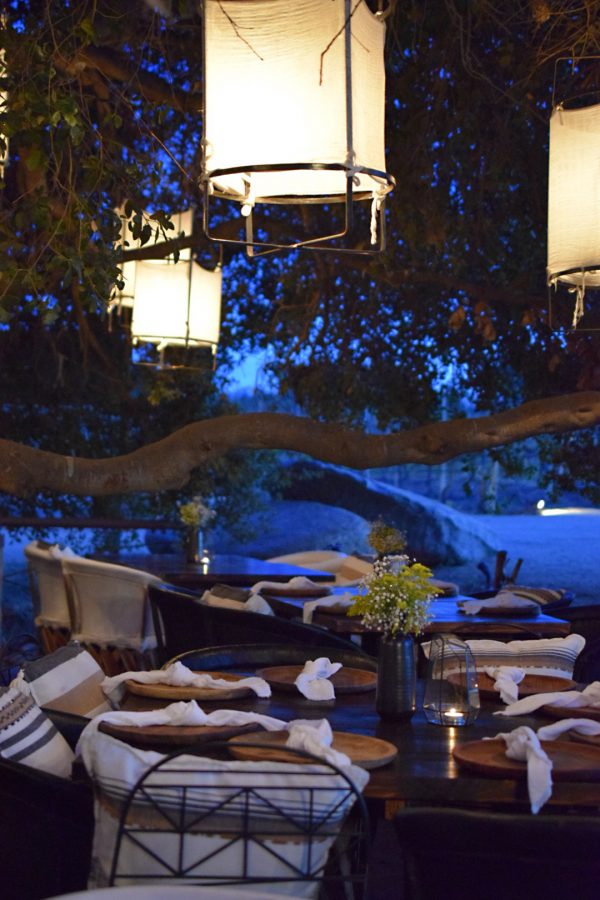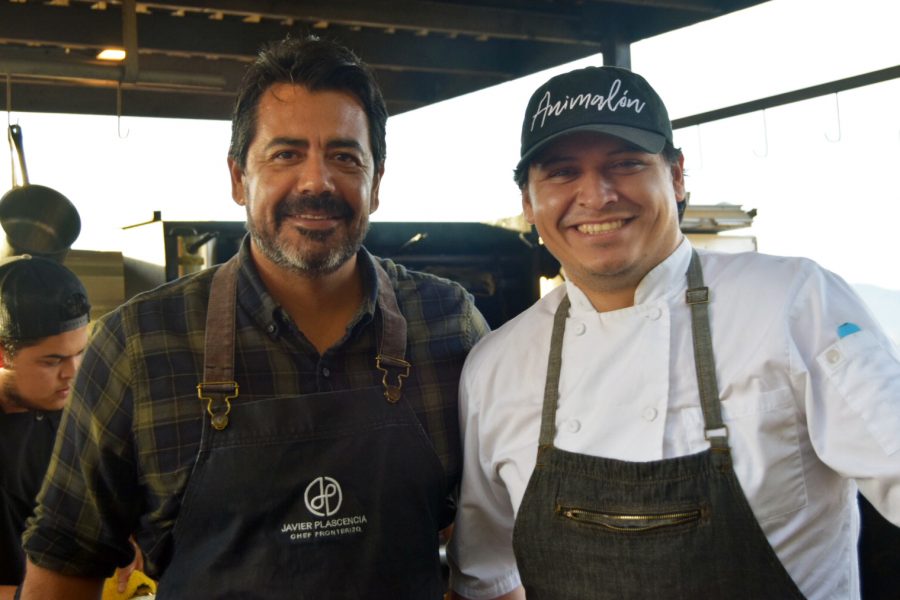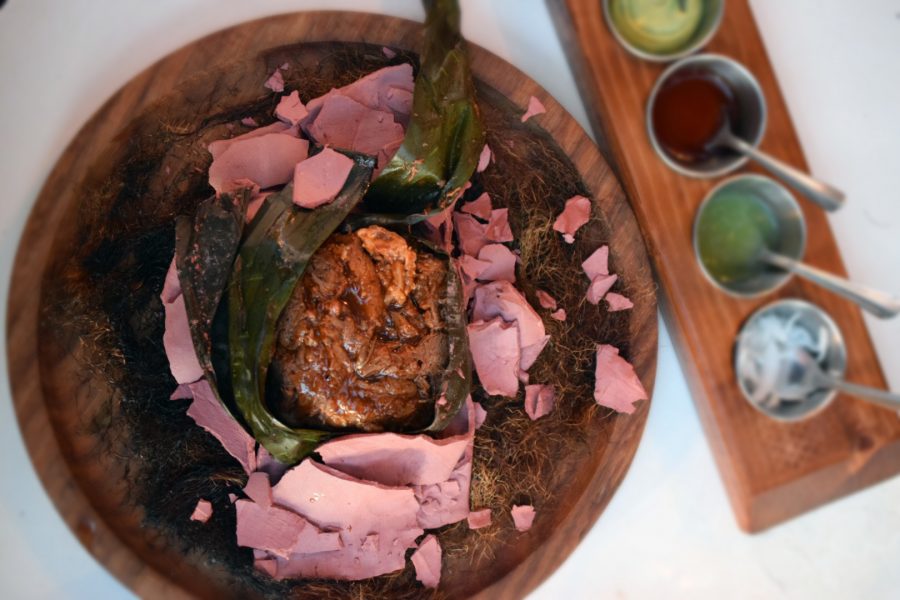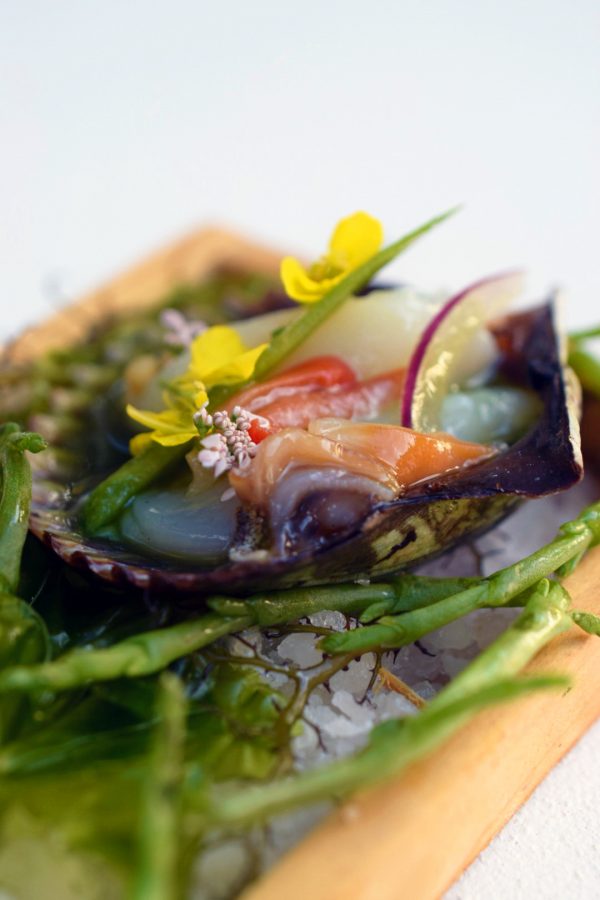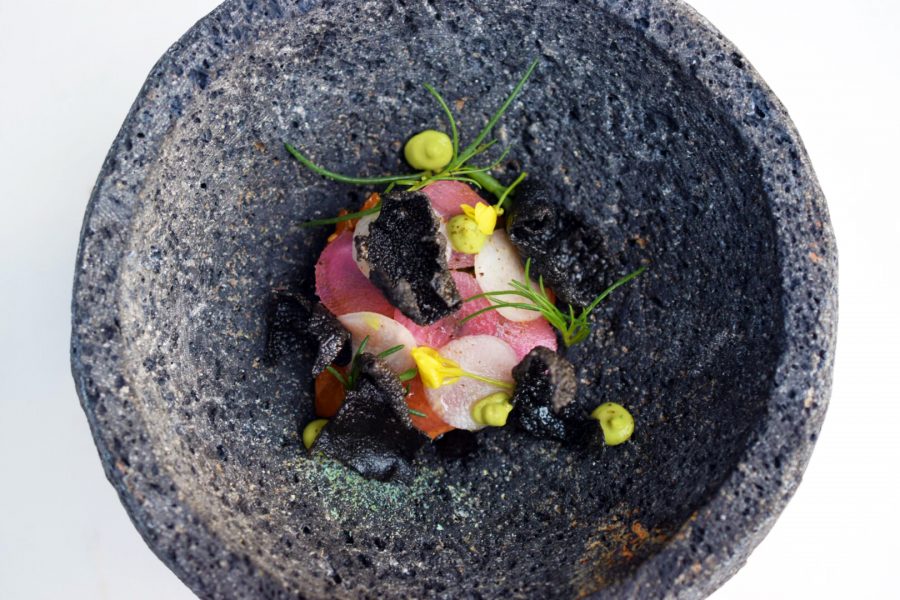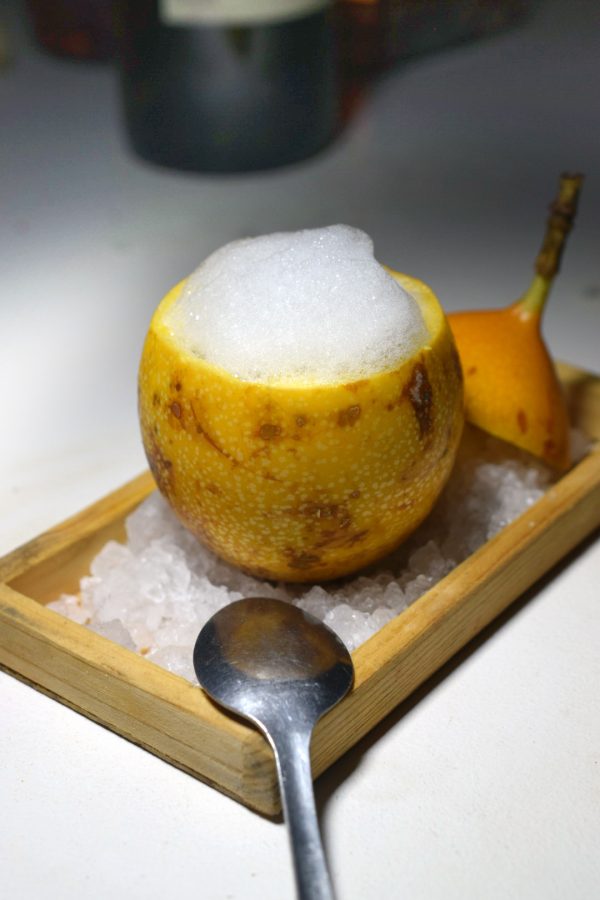LA chef Oscar Torres named Executive Chef of Valle de Guadalupe pop-up
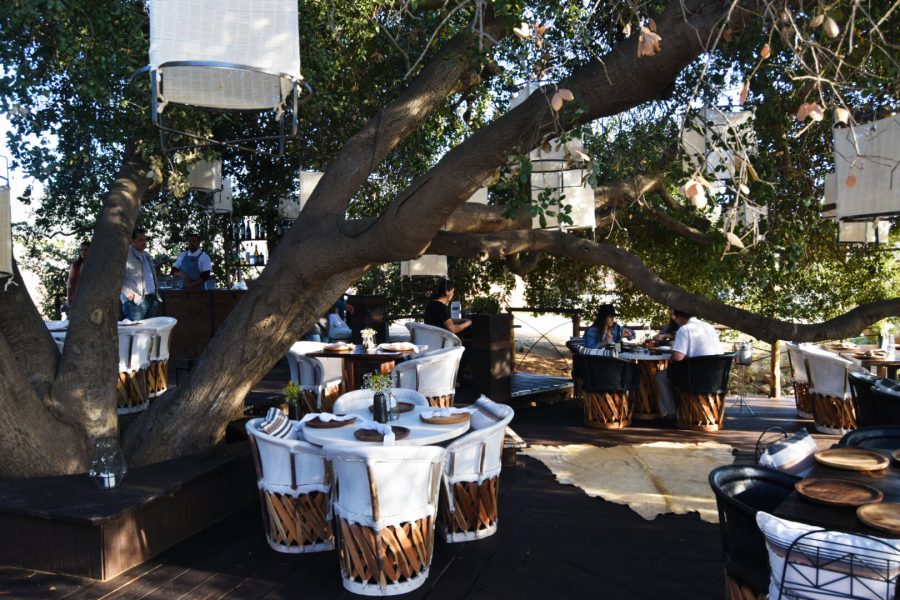
By W. Scott Koenig
ENSENADA, B.C. — Before describing the imaginative food, the transporting atmosphere and the overall experience of dining at Animalón—chef Javier Plascencia’s seasonal pop-up restaurant in the Valle de Guadalupe—let’s get one thing straight about “the tree.” To wit, the sprawling live oak of inconsistently-reported age under which diners are seated for an unforgettable meal of refined yet rustic dishes crafted of local ingredients.
Last year, I was told it was 200 years old, but 100 seems to be the age that most in the media still claim and report. “No, it’s around 200 years old,” Plascencia chuckles when asked him during a recent visit. “Camilo Magoni (of Bodegas Magoni) has a similar tree on his property. He had his guy (an arborist) come take a look at it. You can tell by the width of the trunk.” Settled.
The trunk is hard to miss. It’s the natural dining room’s centerpiece, circumnavigated by tables of chilled, laughing diners, and lit at night by dreamy overhead lanterns. Just outside the tree lies the mobile kitchen. It’s a tight, professional operation, especially considering the rustic setting. When the sun drops below the western range, the experience is similar to that of being in an intimate dining room, though you’re under a single tree in the middle of an open field under a starry sky.
To assist with the menu and service this year and ultimately helm the seasonal campestre style kitchen, Plascencia recruited Los Angeles-based chef Oscar Torres. Torres has worked in restaurants in LA, Cabo San Lucas, and Philadelphia and is billed on Animalón’s website as the creator of “globally influenced cuisine featuring plates inspired by the Mediterranean, ‘Franco-Afrique,’ India and Southeast Asia.” These influences complement Plascencia’s own Baja Mediterranean sensibilities nicely.
This year Plascencia says that the menu will change every 2-3 weeks which should help generate return customers, anxious to see what’s next. In addition to the seven-course tasting menu, diners can also now order from a variety of a la carte dishes, including pastas, grilled meats, seafood, and a clay-baked barbacoa (roasted lamb) thats taste lives up to its spectacular tableside presentation.
The barbacoa, which serves two, is wrapped in a maguey leaf, encased in a clay chrysalis and delivered to the table on a platter surrounded by corn hair. The hair is set afire—it’s all pomp and circumstance as the meat has already been slow roasted for hours in the caja China—and left to burn. The clay is then cracked open to reveal the moist, succulent chili-roasted portion of mutton within. The server ladles a bit of consomé atop the meat and the dish is complete. It’s accompanied by a side of house made salsas and corn tortillas.
The seven-course tasting menu starts with two antojitos (snacks) served together in a Japanese style bento box. The first is a local mussel with chicatana (the midsection of flying ants, typically from Oaxaca), aioli caviar and borage (a local wildflower). It’s served in a faux, edible potato shell which provides a textural counterpoint to the supple mussel. The bay scallop refreshes as an aguachile with green strawberry and sorrel.
The first course is a bright, satisfying Kanpachi crudo. Kanpachi is a fish of Hawaiian origin and pays homage to the section of Torres’ resume where he worked with recipes and ingredients from the Pacific islands. The farmed fish is served with a piquant fermented chili adobo, chayote, seaweed chicharron, and avocado. This was the second time in a week we’d come across a fermented salsa in the Valle, which seems to be a technique with which more chefs are experimenting.
The second course, lobster tallerines, was a favorite. The dish is “inside out” as hearty tagliatelle pasta noodles are wrapped around the sauce, langostinos, and other ingredients. The highly Instagram-able dish includes a ragout of local spiny lobster. “Is it really local?” I ask our server, knowing that most of the crustaceans pulled out from the sea around Rosarito are shipped immediately to Asia. He assures me it is. The ragout, when blended with the crema Mexicana, is rich, creamy and savory and the lobster is bursting with flavor.
The second and third courses of Baja Black Cod in Magoni olive oil with heirloom bean cassoulet and duck breast served in an au jus of its bones with red cabbage escabeche cream hit all the right notes. Both dishes had a nice balance of flavors and protein-to-plant balance. The duck breast is aged for a week and the sweet, yet savory taste is the closest to read meat I’ve experienced in a fowl-based dish. Larger versions of both dishes are on the a la carte menu.
The clay baked barbacoa described previously is served as the fifth course. I was curious, as most tasting menus contain smaller portions of food, focusing on exciting taste buds vs. satisfying hungry appetites. “That’s the thing,” Plascencia shares. “After most people – especially Mexicans – finish a tasting menu, they’re still hungry and want something more to eat. The large portion of barbacoa fills diners up right before a light desert”.
That light desert consists of two dishes. The first is an excellent, refreshing, and slightly boozy granada China (Chinese passionfruit) which blends the fruit with ice, adds passionfruit flavored mezcal, and finishes it with a topping of foamy “salt air”. The drink is served in the casing of the passionfruit, to great visual effect. The second desert is a satisfying parsnip ice cream, topped with a crème of white chocolate and crema Mexicana, served atop an orange citrus cookie.
This year, Animalón will be open from April through late November or December, “depending on the weather,” according to Plascencia. Make your reservations now. The food, ambience, service, and experience are well worth the price of admission. The tasting menu is US$95 with a vegetarian option priced at US$75. Pairings with Baja wines and craft beers are extra. A la carte entrees start at around US$22/plate.
Animalón runs now through November or December at Finca Altozano in the Valle de Guadalupe. Dinners are presented Wed-Sun, with settings at 5:00 and 8:00PM. A limited number of diners may be accommodated per day and reservations are required. For more information and reservations, visit www.animalonbaja.com or call +52 (646) 156-8045
The author was invited to dine at Animalón as a member of the press and received a complimentary tasting menu, generously offered by chef Plascencia. No other compensation was received for the writing of this article, the opinions are the author’s own and the author has and shall continue to happily spend his own peso at events and dinners by the chef and his restaurants.
 San Diego-based food and culture writer W. Scott Koenig is founder of the blog AGringoInMexico.com, author of the book 7 Days in The Valle: Baja California’s Wine Country Cuisine and writes columns for DiningOut San Diego Magazine, SanDiegoRed.com and DiscoverBaja.com. Scott is regional expert for Baja California at ExtremeFoodies.tv (formerly FoodieHub), an international culinary site curated by over 275 experts.
San Diego-based food and culture writer W. Scott Koenig is founder of the blog AGringoInMexico.com, author of the book 7 Days in The Valle: Baja California’s Wine Country Cuisine and writes columns for DiningOut San Diego Magazine, SanDiegoRed.com and DiscoverBaja.com. Scott is regional expert for Baja California at ExtremeFoodies.tv (formerly FoodieHub), an international culinary site curated by over 275 experts.

